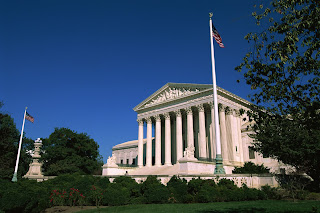David Lorenzo runs the Rainmaker Lawyer Blog. He has a great article on the importance of communicating with your clients.
One of the questions I am asked most often is: “How often should I communicate with my clients and prospective clients?”Please click here for the original article.
Many people are afraid they will annoy their clients and prospective clients if they communicate with them too often. Lawyers (in my client group) are particularly concerned about the frequency of delivery of email and print information. They ask: “Is a weekly email newsletter too much?” And “Is a monthly print newsletter too frequent?”
The answers are: “NO” and “NO”.
If you provide your clients and prospects with the right kind of content they will happily read it no matter how often you send it to them.
This is not some academic theory (although it is supported by substantial academic evidence). It is something I have learned through experience.
My email tip – The Rainmaker Minute —is distributed weekly to my clients, my referral partners, people who may be clients some day and my friends and relatives. These are all people who I have met or have otherwise given me permission to correspond with them. Less than one percent of people I have sent this email to have ever opted out.
My monthly newsletter – The Rainmaker Letter – goes to Clients and VIPs (people who request it). Every 30 days these folks receive a 4 page newsletter from me. And every month I get several requests to send copies to friends of the recipients.
The bulk of my new clients, by far, come from people who have been reading my newsletters, books and blog articles regularly. They know me. They like me and they trust me.
This works for attorneys too.
The secret to keeping your clients and prospects engaged is contained within four key qualities of the content you create. Here are the four qualities of effective communication:
Interesting Content
This is, by far, the most important component of any communication system. Your content must be interesting and relevant to your audience. People change the channel on boring television programs. People unsubscribe from boring newsletters.
A shot of spice also never hurt the content of a newsletter or email. You’ll notice I occasionally pick fights with my competitors or tweak a lousy vendor or talk about sex just to make sure you are still with me.
Make sure your material is interesting and informative.
Frequency
People want to hear from you more often than you think. If you are providing value in your newsletter or email, there is no reason to worry about sending something to people too often. A good rule of thumb is to think about how often you call your best friend. You call when you have something interesting to say and your call is welcomed.
The standard for my clients is a weekly email and a monthly newsletter. I have clients who send an email out daily – like an inspirational quote of the day or a stock market update (recapping yesterday’s results). Although these things are not relevant to their law practice, they are important to the person receiving them.
Consistency
The Rainmaker Minute is sent out each Wednesday at 12 noon (Eastern). Every week, same time. People know when to expect it. The Rainmaker Letter is sent out each month on the 15th (unless it is a Sunday – then we send it out a day early).
People like things that are consistent because they are reliable. They trust people who are consistent.
If you send out a newsletter one month and then you skip a few months, people will think you are unreliable.
Personality
Your writing should fit your personality. Many people say they can actually hear me speaking when they read my email and my newsletter. You are not writing an academic work when you sit down to compose your newsletter. You are having a conversation with a friend. You are helping them get to know you. Inject your personality into the writing.
Monthly newsletters and weekly email may seem like a lot of work – and it can be. But remember, doing this consistently, over time, will provide you with a handsome reward in new clients down the road.
Someone is finishing reading this article right now and they are going to implement a weekly and monthly communication system. Will it be you or will it be that competitor you are most concerned about?
Please be sure to visit www.hardinglaw.com, the website for the law firm of Harding & Associates, for more information on California family law.


